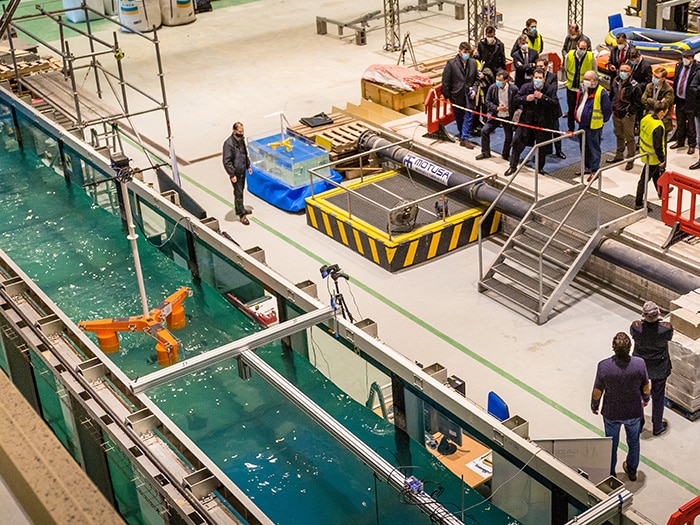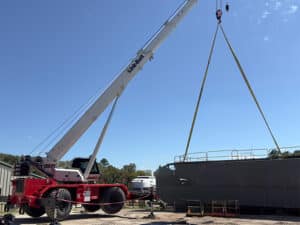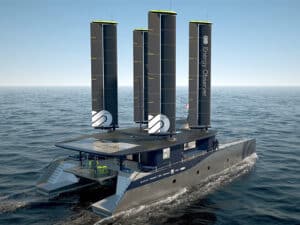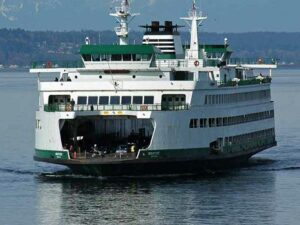
Gazelle floating wind platform completes model basin tests
Written by Nick Blenkey
Gazelle Wind Power team members, media, and wind industry representatives witnessed Gazelle platform model basin testing in Spain. [Photo: Gazelle Wind Power]
Dublin, Ireland, headquartered floating offshore wind platform designer Gazelle Wind Power reports that model basin tests have verified the viability of its platform concept.
Gazelle, which opened a U.S. office earlier this year says it “reinvented the floating wind platform to be lighter, flexible, and more stable” with a platform design that is a hybrid of semi-submersible and tension leg platform designs. According to the company, it is lighter than conventional platforms, uses approximately 70% less steel and is one-third the weight of other floating platforms. It is designed to have a tilt of less than 1 degree and to have 80% less mooring tension load than tension leg platforms.
The model basin tests were carried out at the Environmental Hydraulics Institute of the University of Cantabria (IHCantabria) in Spain. The test report, witnessed by DNV and Safier Ingenierie, verified the feasibility of the Gazelle platform’s concept in a wide range of conditions. A prototype model of the platform was analyzed through a variety of assessments including surge and yaw excitation tests, wind alone tests, wave alone tests, decay tests, and more.
“The test serves to further validate our technology—which is key to ultimately reaching commercialization and unlocking the full potential of offshore wind,” said Gazelle Wind Power CTO Jason Wormald. “These tests show that our platform will serve as a vital piece of the energy transition that will center around decarbonization, independence, and security.”
The main results from the tests were based on a 10 MW floating offshore wind turbine (FOWT). The company says the tests confirmed Gazelle’s main principles—including the main physical principles behind the Gazelle Wind Power platform design.
The tests also reaffirmed that the Gazelle platform has significantly reduced pitch motions even in extreme sea conditions. The data collected from the various tests will be used to create a benchmarking database which will be the basis of the next phase of the design loop in conjunction with Safier Ingenierie.




